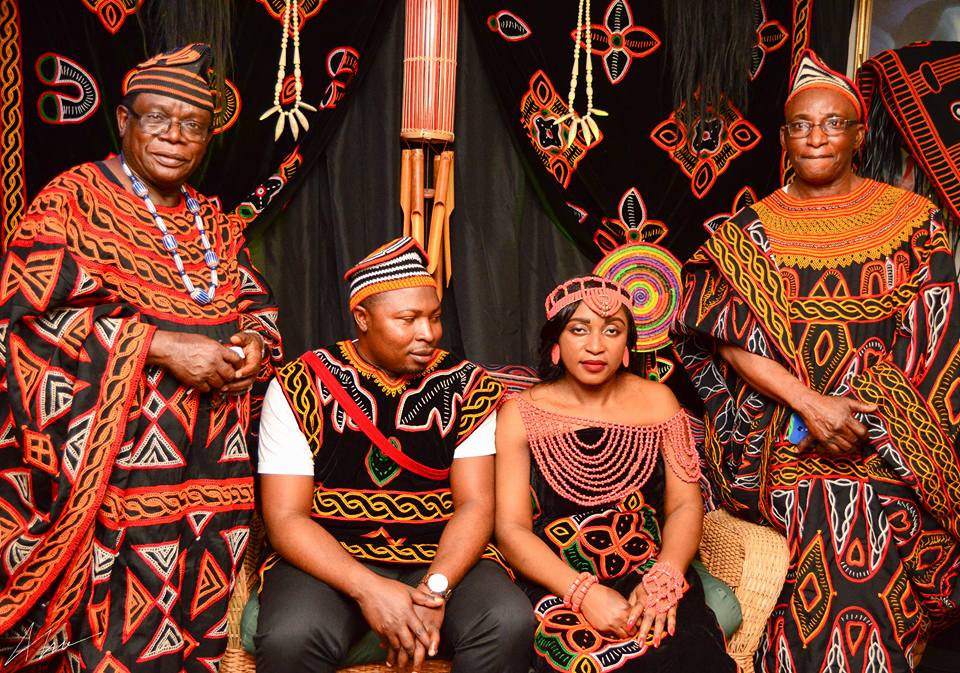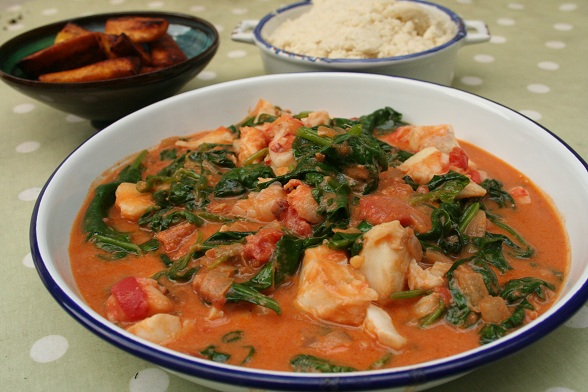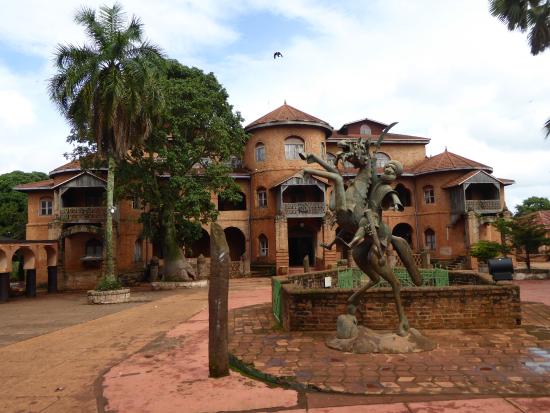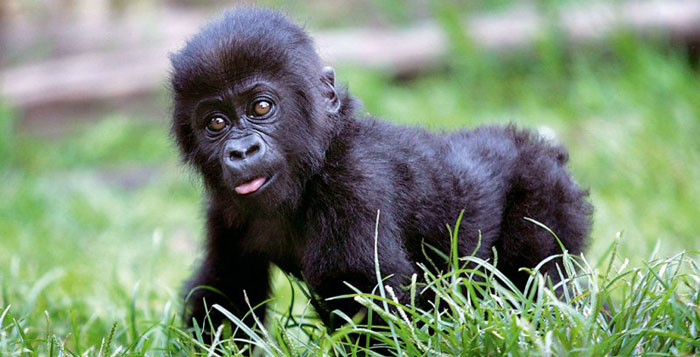
Cameroon
Mesmeric Cameroon
Cameroon is a lively country that is always on the go. It is a hive of activity from Yaoundé to Foumban, there are no sleepy villages. Its vast diversity of people mixed in with lush rainforests, dotted volcanoes and cool waters of the Atlantic Ocean on its shore, make Cameroon an enchanting experience. With more stability than its neighbours in Africa, Cameroon is an affordable and safe destination to travel to.
Cameroonian food is based on a combination of African tastes, produce available and French influences. Vegetables are popular ingredients in many dishes and bring together a meal either as a main or a side. Fish is more common than beef, chicken and venison. Grilled meats, stews and curries all form part of the basis of Cameroonian cooking. West of the capital, lies the ever so popular Saga African Restaurant in the port city of Douala. Here you can experience delicious twists to classic food in this modern establishment. Try the ndole (bitter leaf stew) – it’s a hit with locals. But there are also pizzas, noodles and plates of pasta on offer if you’re not as adventurous. In Yaoundé is the quaint Le Biniou, offering fluffy pancakes with either sweet or savoury toppings. If you’re looking for more than just a light meal, order brochettes (grilled skewers) of meat or fish.

http://food-photo.xyz/easy-recipes-for-cameroonian-food.html – Image 01 (Cameroonian food)
While shopping for souvenirs to remind you of your wonderful trip through Cameroon, visit Marche Central in Yaoundé. Rolls of fabric unravel from the ceilings to the floors. Yaoundé has amazing tailors who produce beautiful Cameroonian garments. You’ll notice that in the North of the country, clothing is more conservative due to it being predominantly Muslim. In the South, clothing is not as conservative due to the humidity of the rainforests. Common clothing shared are boubou’s for men, a long loose fitting robe. Women wear pagnes, a wrap used as a skirt or a dress. Ask a tailor to make you use some of the printed fabrics to make a boubou or a kwa, a handbag.
With Yaoundé being the capital, there is more to do than eat at great spots and visit Marche Central. Pay a visit to the Nôtre Dame Cathedral also referred to as Our Lady of Victories Cathedral. Beyond its walls, the sounds of a bustling city are drowned out by the melodic songs in praise of God inside. Declared scared in 1955, the cathedral still draws huge crowds of Christians and it is quite a sight to see the masses at prayer. A short walk through the city will then lead you onto the Musée National. This previous presidential residence is now a museum and artefacts a reminder of Cameroon’s past. Ethnic groups are represented throughout the museum and you will find willing guides ready to explain the country’s history and the significance of each historical piece.

http://www.rootstoglory.com/cameroonian-traditional-wedding-ngwo/ – Image 02 (Traditional wear)
You may find yourself yearning for more of the country’s history, so a trip to the Musée de la Blackitude also in central Yaoundé is a must. Relatively young, after only being established in 2000 – the museum is private and showcases more pieces from the royal family of Western Cameroon. Many collections in the museum have been donated and purchased. Although there are many eager guides willing to show you around and explain each collection, French is used here. Do brush up on it before you visit.
And while cultural sites are fascinating, the exhilaration of viewing wildlife is still quite popular. South of the Yaoundé is the Mefou National Park. Run by Ape Action Africa, this conservation reserve is a sanctuary for protected apes. The sanctuary is open daily with restrictions during the rainy season due to concerns about the roads. The sanctuary is also a community upliftment project, as locals are educated about the importance of preserving and protecting their environment and animals. Here you can interact with the primates, watch them swing from tree to tree and then donate to their well-being.
North West of the capital in Foumban is the astonishing Palais Royal, once home to a Bamoun sultan. Now acting as a museum holding the treasures of the Bamoun dynasty. It is open daily and there is an entrance as well as a camera fee, but it is worth it. You can find beaded masks, scriptures and ancient royal clothing in the museum. The museum visit gives insight into the life of Sultan Njoya, who led a colourful life. The palace is opposite a busy market and mosque, so the area is quite a frenzy of activity. Part of the palace tour, you will be able to walk through the dusty courtyards, view the significant drum once used for ceremonies and there is a shop on site with museum memorabilia.

https://www.tripadvisor.co.za/Attraction_Review-g482838-d8501490-Reviews-Foumban_Royal_Palace_Museum-Foumban_West_Region.html – Image 03 (Palais Royal)
A two-hour drive from Foumban, will lead you to the Bandjoun region of Cameroon. Located here is the Chefferie, the headquarters of chiefs from the Bandjoun region. Banana plantations act as a border but once inside you are greeted by traditionally built huts. The highest hut belonged to the Chief and was built over three centuries ago. It has been well preserved and maintained to keep it standing up. Inside it, there were reserves for necessities such as wood and maize. Much like other huts in the area. There is also a museum onsite, that showcase the artefacts of the tribe and chiefs. Book ahead of time and make it a day trip with your camera.
While in Bandjoun, Fon’s Palace is quite a historical and cultural visit as well. Open from Monday to Saturday, with entrance and camera fees – the palace is the remains of the ancient Tikar empire. The palace opens into many attached buildings, some of which belonged to the Fon’s (Chief’s) wives and a sacred shrine. There is also the oddly colonial designed museum onsite which gives you an insight into the dynasty through its artefacts.
Close to the coast in the city of Limbe, is the protected Limbe Wildlife Centre. Don’t expect to see cramped up cages with animals like a zoo. The Limbe Wildlife Centre is different. It is more of a conservation reserve with huge enclosures for their rescued animals to live in. You can find cheerful chimpanzees and curious gorillas, peeping through the trees. Staff on site are always ready to help you and will provide you with information. Take along your camera, comfortable shoes and get ready to interact with these amazing creatures. Afterwards take a relaxing stroll through the Limbe Botanical Gardens. Found originally by German colonisers, the Limbe Botanical Gardens is a tropical vegetation marvel. There is an array of exotic, beautiful plants that fall part of the conservation project. Spend a few hours here, walking along the trees and breathe in the clear air.

http://phantomcow.com/the-baby-gorilla-who-wouldnt-smile/ – Image 04 (Limbe Wildlife Centre)
To see animals in a more natural environment, visit the Waza National Park. Home to several endangered species, the park is still one of the most frequently visited in Africa. Offering a unique experience is CamTours, giving you the choice of either starting in Douala or Yaoundé and set over four days and three nights. The park is considered a UNESCO biosphere reserve and gives you the opportunity to travel the entire park enjoying and admiring Cameroon’s wildlife.
Before leaving Limbe, be sure to trek through the impressive Mandara mountains. Take along a local and make your way to the mountains. The mountains are home to the Mofu tribe and Chadic is commonly spoken. While trekking through the range, you will be able to see Nigeria in the distance. The strange shapes and formations are a result of volcanic activity years ago. And though the mountains cannot be conquered in a mere day, devoting a day of your journey through Cameroon is enough for any thrill-seeker. If you do indeed want to conquer it, you will need to set up camp and dedicate a few days with a knowledgeable guide.
Make your way down to Kribi, specifically for the Chutes de la Lobé. A series of waterfalls that flow into the ocean. It’s an enticing sight, so do take along your swimming trunks. Frolicking in the cool waters, with the sound of crashing waters behind you is an experience you will never forget. There are restaurants in the area offering a delicious lunch of local seafood cuisine on the beach. This is a whole day affair, so plan to relax.
A final pit stop before you bid Cameroon goodbye? Parc National de Campo-Ma ‘an. A tropical rainforest set near the coast hosts rich vegetation and an overwhelming number of species from forest elephants to swinging primates and even fish. Under the WWF, this park falls part of Cameroon’s ecotourism sites and offers you a unique experience in that there are guided walks, canopy tours, guided safari drives and boat trips down the river. Take a guide who knows the park well and enjoy the African landscape before you depart Cameroon.
Cameroon seems to encompass all the natural marvels in Africa, in between its borders. There are mountainous ranges, stretches of coastline, rainforests and plain lands. Cameroon is a fascinating start for first-time travellers to Africa. It has growing infrastructure, warm people and much to offer you in experiences. Do visit.
